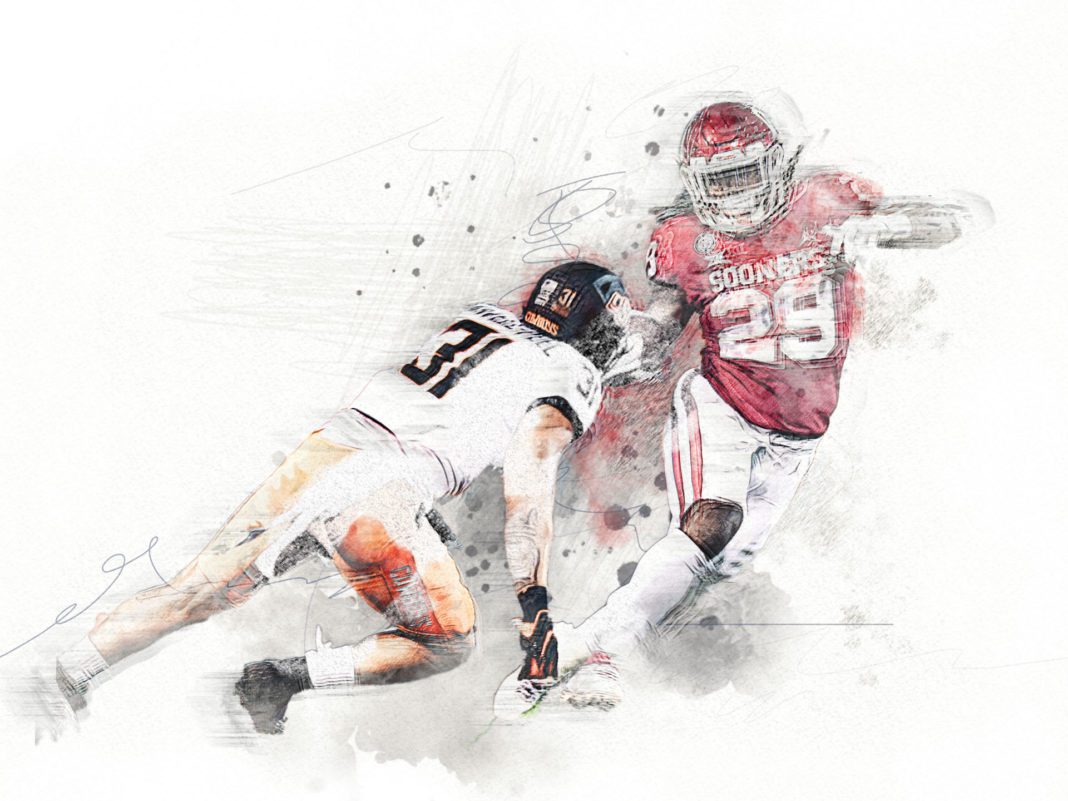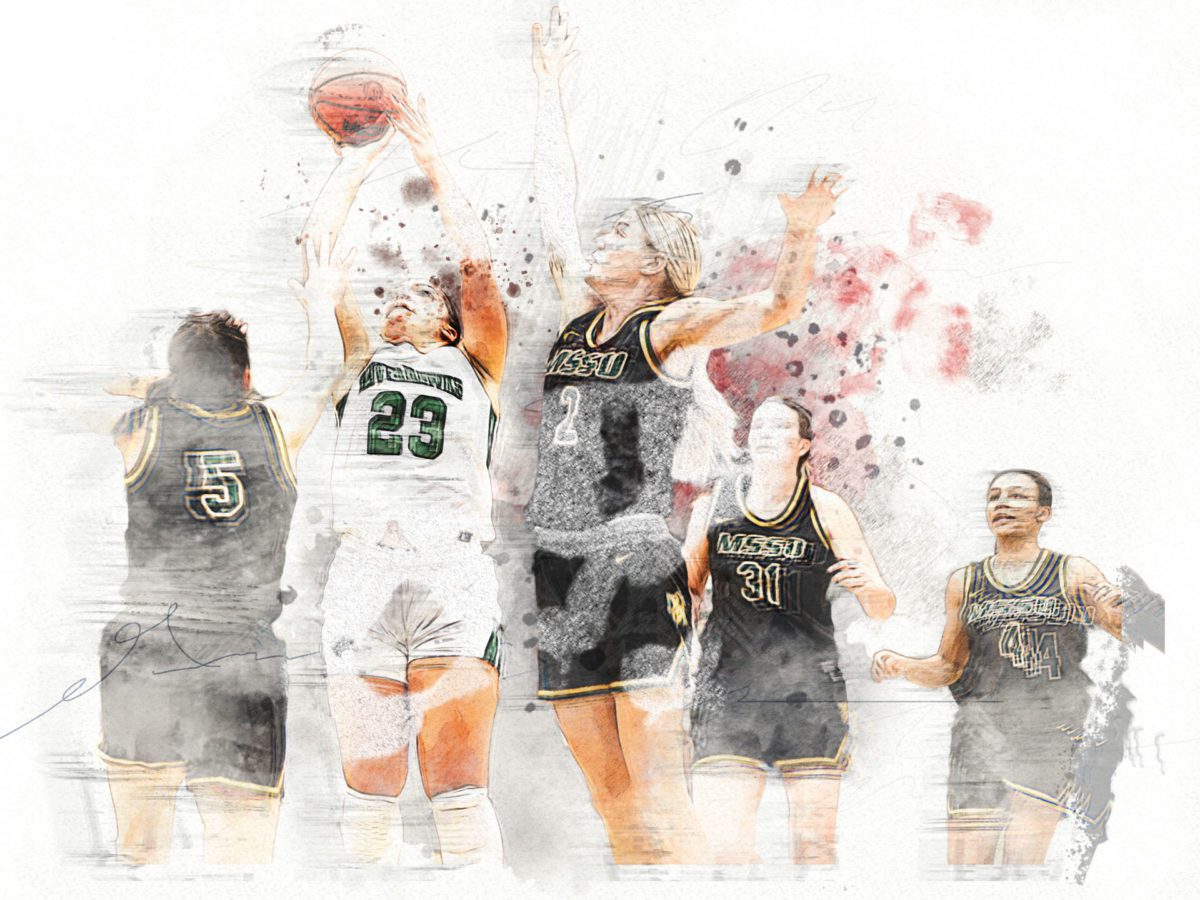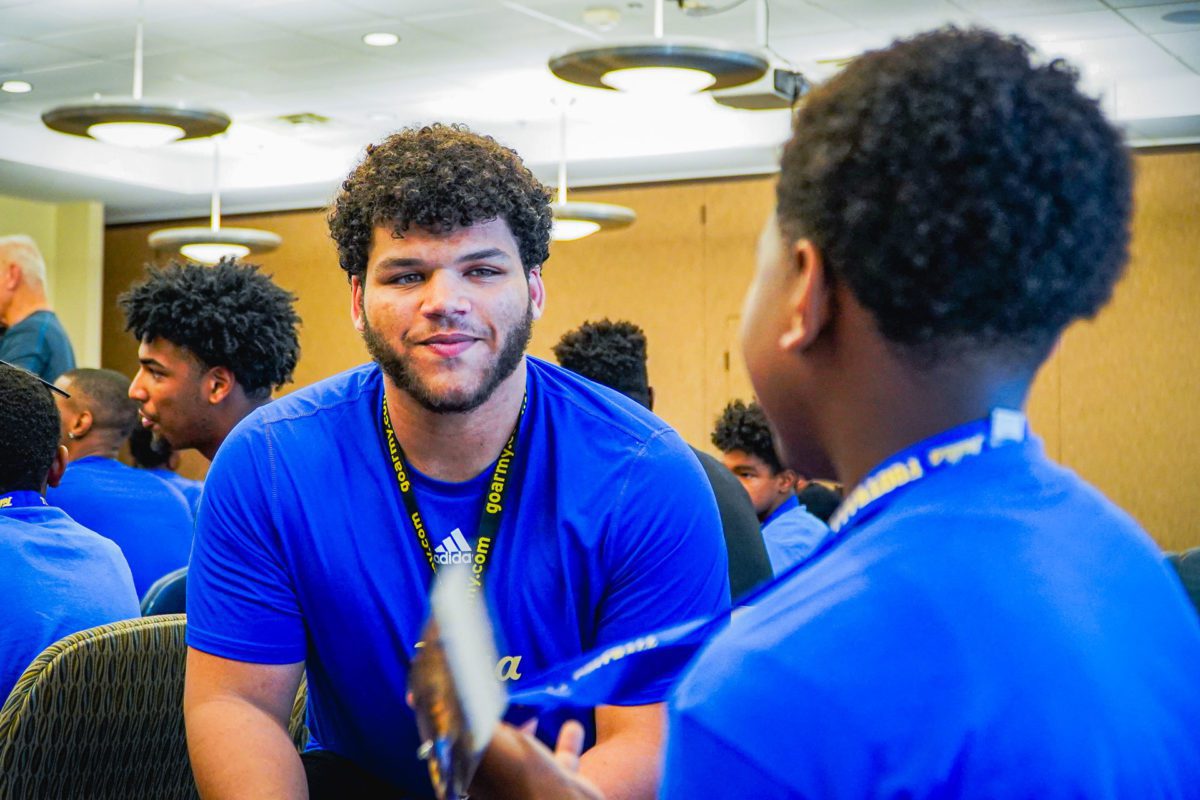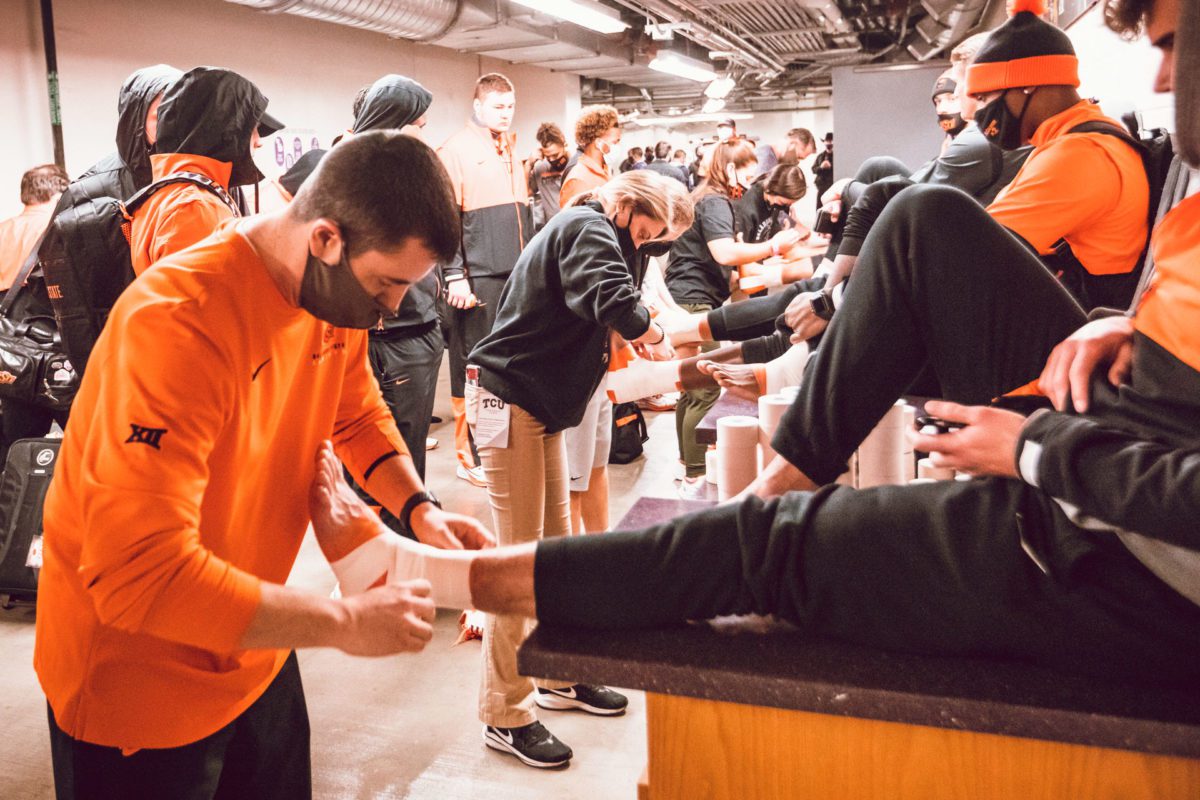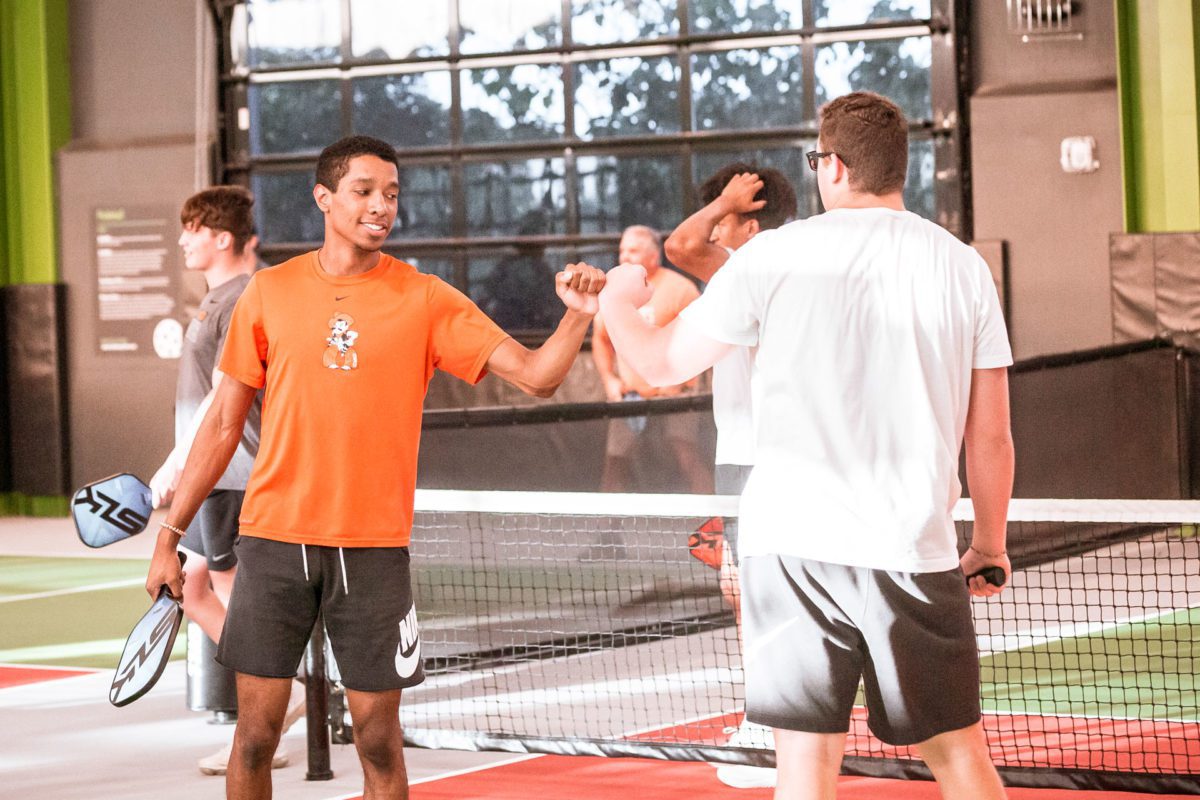Creating Camaraderie
A team on the field needs to be a team off the field, too, so coaches and support staff work to ensure athletes have a sense of camaraderie ‘round the clock.
Don Tomkalski, University of Tulsa’s senior associate athletic director for communications, says that “it starts with recruiting good people and creating a family-type atmosphere within the team framework. It is also important that our student athletes know what resources are available to help them have a positive experience at Tulsa and have success in all aspects of campus life – athletics, academics and social.”
At TU, teams are strengthened with unity events and community gatherings.
“Not only is it the coaching staffs that plan activities to help bond a team both on and off the field, but it’s the leadership amongst the team that has a big role and takes the initiative in developing team chemistry off the field,” he says. “It may be having a cookout, going fishing or just hanging out in both the off-season and during the season.”
Every sports program has a unique culture.
“Each coach at Oklahoma State has their own style as it pertains to team building,” says Gavin Lang, OSU’s associate athletic director for communications. “The football team will stoke the players’ competitive fire with non-football competitions such as sand volleyball or paintball, among other things. In softball, the day after the Cowgirls beat Oklahoma to win the Big 12 Championship, they drove to Broken Bow to spend time at the lake in advance of the NCAA tournament. The cross country team also leaves town. At OSU, there are plenty of options for team building.”
Northeastern State University football coach J.J. Eckert emphasizes the importance of relationships to his athletes.
“I believe it is huge that our team members get along on the field, in the locker room, in the weight room, and in the classroom and dorms. Those relationships are what build the belief in a family-first mentality that allows a team to be successful in any challenge they face,” he says. “Great teams have great chemistry, and we work on developing relationships throughout our team on both sides of the ball.”
Academic Integrity
Around many college campuses, there is often a harmful idea that athletes get it easier in school because their plates are already full with sports. Athletic programs work to combat that stereotype by emphasizing academic integrity and providing tutors and study groups to help athletes stay balanced.
“Student athletes do not get any special treatment while seeking a college degree,” says NSU’s assistant athletics director Scott Pettus. “The NCAA explicitly states that student athletes are not afforded any extra or special benefits that are not available to a regular student on campus. Yes, their plates are full with activities related to their chosen sport. However, there are strict guidelines on the number of hours a student-athlete can be involved in sport-related activities each week.”
Pettus explains that student athletes are given a minimum of one day off each week, must uphold the NCAA minimum GPA requirements to play, and that NSU stresses academic success as the paramount goal of attending college.
“We are proud of our student-athlete academic success rate and our graduation rate,” he says.
University of Tulsa’s program, Office of Academic and Student Services (OASiS), aims to promote student-athlete academic achievement, community responsibility and personal accountability, says Schnea Nealy, the associate athletic director for student-athlete development.
Academic support through OASiS includes academic monitoring to oversee progress of student athletes in accordance with NCAA, as well as providing assessments to all student athletes in vocabulary, reading comprehension and writing skills. Tutors provide course specific assistance beyond the classroom, and assigned mentors assist in the development of life skills such as time management, organization and positive study habits.
Female Athletics
Male-dominated sports are wildly popular on college campuses – often more so than female-led athletics. So how are campuses incentivizing interest and engagement with female sports?
“Female sports at Oklahoma State are as strong now as they have ever been,” says Lang. “In 2021-22 alone, the equestrian team won the national championship, we had an NCAA individual track and field champion, and the softball team advanced to the Final Four at the NCAA Women’s College World Series. The tennis team played in the Sweet 16 and the cross country team won the Big 12 championship. The year prior, the golf team finished second in the nation.”
And interest in women’s sports continues to grow.
“OSU had to add seating to Cowgirl Stadium for softball during the postseason due to overflow crowds,” says Lang. “A few years back, the women’s tennis team advancing to the NCAA final in Tulsa resulted in the largest crowd in the history of the NCAA tennis championships. We had a Bedlam women’s basketball game here a few years ago that completely sold out Gallagher-Iba Arena. So the disparity in popularity between our men’s and women’s sports may not be as large as some would think.”
At TU, Tomkalski points out that changes in culture impact all sports.
“Now in the 21st century, all colleges to some extent struggle with attendance for not only female sports but male sports,” he says. “This is due to multiple factors, including the overwhelming number of games that are televised, as well as other entertainment competing for the dollar – concerts, casinos, nightlife, among others. The university’s athletic department promotes all its sports and tries to create an atmosphere that’s entertaining for fans attending games.”
Tomkalski recommends fans keep an eye on TU’s female sporting teams.
“Historically, the women’s golf program – with four national championships and five national runner-up finishes since the beginning of the program in 1974 – is the most prestigious of Tulsa’s women’s sports,” he says. “Softball has 11 NCAA appearances and seven conference championships, all since 2006. Tennis has made the NCAA Tournament 12 times since 2007, with eight conference titles. Women’s basketball has started a new era under coach Angie Nelp and won 17 games, the most in eight years.”
Walk-On Athletes
Earning a spot on a college sports team is complicated. Aside from getting scouted, the walk-on tryout process can vary from school to school.
“The athletic department encourages walk-on athletes to join Golden Hurricane teams,” says Tomkalski. “Most all of Tulsa’s 17 intercollegiate sports have a percentage of walk-on student athletes on their rosters. We have also seen where some of these walk-on athletes have been awarded athletic scholarships during their collegiate career. The football program, for example, currently has five former walk-ons now on full scholarship and a total of 32 walk-ons on the roster.”
OSU’s Lang describes walk-ons as “valuable members of every team at Oklahoma State. It’s not unusual for student athletes who come to us as walk-ons to earn scholarships and have the opportunity to become superstars in their own right,” he says. “Using football as an example, Dan Bailey came to us as a walk-on and eventually set the NCAA record for points scored by a kicker and won the Lou Groza Award, presented to the nation’s top kicker. He went on to a distinguished career in the NFL that saw him become the most accurate kicker in the history of the Dallas Cowboys franchise at one point.”
At NSU, the process “varies by sport and is up to the coach of that sport to determine,” says Pettus. “Some sports can have tryouts, others cannot. If a tryout is offered, the prospective student-athlete must have a copy of a current athletics physical and insurance verified before the tryout. Many of our sports have team camps and ID camps during the summer to assist in identifying prospective student athletes.”
The Importance
of Physical Therapy
Staying in shape, avoiding injury and utilizing physical therapy where needed is emphasized in all collegiate sporting activities.
Chris Nerio, TU’s assistant athletic director for student health and performance, offers advice when it comes to taking care of your body before, during and after sporting events.
“The first thing is hydration. If an athlete is not hydrated, that person is more susceptible to soft tissue injuries,” he says. “Not only is it hydrating with water, but putting electrolytes in your body through Gatorade and those types of sources. It’s also important to eat the right things and have the right amount of carbs in your body to help fuel yourself. We suggest taking some preventable measures as well – like foam rolling, massage therapy guns, recovery boots, cold tubs after practice and icing certain areas for a particular injury.”
Physical therapy is integral to any athlete’s success, but “especially when an athlete has suffered an injury,” says Nerio. “Therapy will help the athlete to get healthy and back physically to where they were before. It’s also important in a preventative way, especially if an athlete is susceptible to certain injuries.”
Lang continues: “A big part of staying in top athletic shape is listening to your body. There are times when athletes can push through things and times when it’s wiser to seek help,” he says. “The athletic trainers are a central part of that equation at Oklahoma State.”
NSU Athletics head trainer Abby Gunnink says that the “most important things to do are to eat, sleep and hydrate. Never let injuries linger, because it will probably come back to haunt you. Don’t ignore your body,” she says. “Physical therapy is important to all sports. At NSU, we incorporate rehabilitation into everything.”
Robert Fulton, University of Oklahoma’s associate athletics director of athletic medicine, say it’s all about patience.
“Getting and keeping your body in tip-top shape is a lifestyle,” he says. “It requires consistent hard work, eating right and getting adequate sleep. Conversely, you want to avoid trying to do too much too soon and too fast. There’s no quick fix. It’s a process that takes time and effort.”
A Well-Rounded Life
Collegiate leadership works to ensure athletes are getting a well-rounded college experience, not focused solely on sports.
“‘Well-rounded’ can be defined differently based on the needs of the student-athlete,” says Brenton Sumler, OU’s associate athletics director for student-athlete experience and well-Being. “We strive to meet our student athletes where they are as it pertains to their personal, holistic development. From the hard skills of resume writing and interview prep to the soft skills of interpersonal communication and emotional intelligence, we provide resources to meet the unique needs of each individual. Along with those resources, we expose them to programming, events and speakers to broaden their minds, so that they can leave OU as the best version of themselves and become a positive global citizen.”
NSU provides a variety of resources to its student athletes as well.
“NSU Athletics offers at least one Life Skills program for student athletes each academic year, and also has an aggressive sexual assault/awareness seminar that is required to be completed by every student-athlete, coach and athletics administrator,” says Pettus. “As a member of the NCAA, we are required to have a Student-Athlete Advisory Committee (SAAC), composed of at least one athlete from each sport. SAAC plans fundraising activities throughout the year to support the NCAA Division II charity of choice: Make-A-Wish.”
Along with that, different coaches at NSU can schedule allotted community service hours for their sports.
“Some sports read to elementary classes, others volunteer with clean-up projects in the community, as well as a variety of other events throughout the year,” says Pettus.
Lang says that making sure student athletes have a well-rounded experience is critical.
“Each student-athlete handles this differently and according to their own sensibilities,” he says. “For some, it’s plugging into Greek life. For others, it’s as simple as living with roommates who don’t play sports. Maybe it’s getting involved at church. Our student athletes have the option to be as involved as they choose to be. One example is Anthony Hill. Anthony played wide receiver on our football team but also had a passion for drama, so he got involved with that during his time at Oklahoma State. After graduation, he got into modeling and is now a regular cast member on ABC’s Grey’s Anatomy.”






















